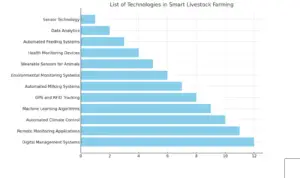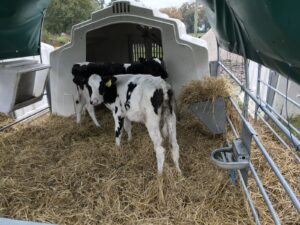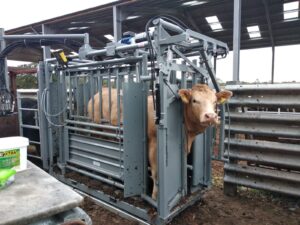In hobby farms, chickens are often the first and easiest to keep and raise. The pasture-raised system is one of the ways to manage these animals.
In this guide on raising chickens on pasture, you can look at the numerous benefits this system can provide, from improved welfare to a more diverse diet, the superior quality of eggs and meat they produce, and the ethical farming practices that elevate their overall well-being.
Learn about the deep connections between pasture-raised chickens and sustainable agriculture and how it contributes to a healthier environment. Our guide also provides practical insights into managing chickens according to age, selecting the best breed for pasture raising, and providing shelter and supplementary feeding without forgetting that raising chickens at pasture also comes with challenges and potential downfalls.
Advantages of Raising Chickens on Pasture
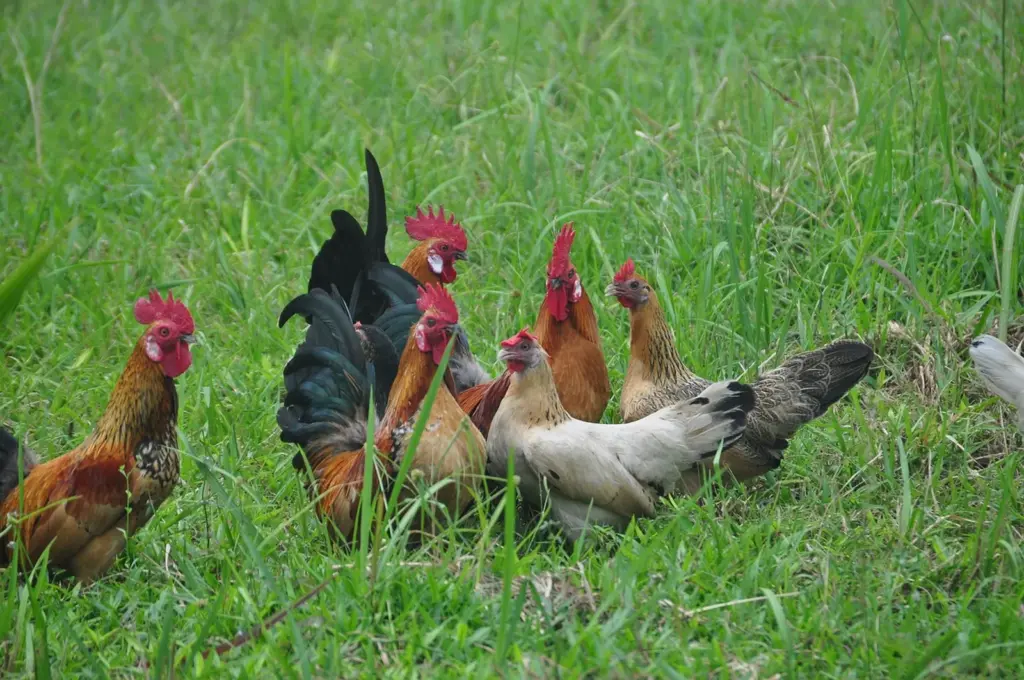
Benefits for Chickens Welfare
Pasture-raised chickens enjoy a wide range of health benefits; having access to a natural environment means engaging in natural behaviors such as scratching, pecking, and foraging, which are critical for their well-being. Pasture-raised chickens’ diet is more diverse, encompassing insects, worms, seeds, and green vegetation, contributing to their health and resilience against diseases.
Taste and Quality Differences in Eggs and Meat
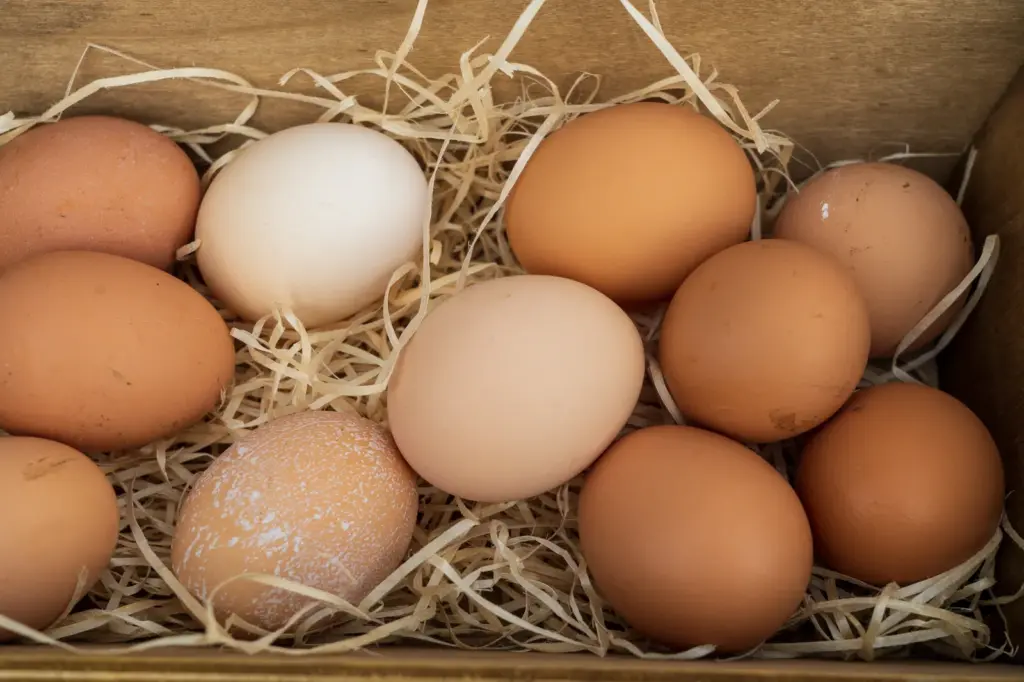
A healthier chicken equates to healthier eggs and meat. Eggs from pasture-raised chickens often have bright, firm yolks and strong shells, indicating a balanced and nutritious diet. They have higher Omega-3 fatty acids and Vitamin E levels and less cholesterol than conventionally raised chicken eggs. The meat has a distinctive flavor, primarily attributed to the chickens’ diverse diet and higher activity levels. It tends to be leaner with a better distribution of fat and is generally believed to be more nutritious with higher levels of certain essential nutrients like Omega-3 fatty acids.
Moreover, supporting pasture-raised chickens aligns better with ethical animal farming practices and promotes animal welfare. It offers chickens a life more suitable for their instincts.
Connection of Chicken Farming to Sustainability
Raising chickens on pasture has deep connections to sustainability and can contribute significantly to building a more resilient and regenerative agricultural system. An essential aspect of sustainable agriculture is the emphasis on animal welfare, soil health, and ecological balance.
Positive Environmental Impacts
Pasture-raised chickens can help reduce farming operations’ carbon footprint by decreasing reliance on manufactured feeds and intensive energy use associated with conventional poultry production. Also, their foraging action helps manage weed growth, and their movement across the land supports natural land management practices.
Impact of Pasture-Raised Chickens on Soil Health
A meaningful impact of raising chickens on pasture is the marked improvement in soil health. Chickens contribute in various ways, including their manure, role in pest control, and effect on soil aeration that helps carbon sequestration.
Chicken Manure as a Soil Amendment
Chicken manure is a rich source of nutrients, making it an excellent natural fertilizer. As the chickens graze, their manure is directly deposited onto the soil, providing an ongoing basis of organic material that boosts fertility and helps improve soil structure.
Natural Pest Control
As they forage, chickens eat insects, larvae, and even small rodents that can access crops or pastures.
Soil Aeration and Carbon Sequestration
Through their scratching and pecking, chickens help to aerate the soil, improving its structure and increasing its ability to absorb water. This activity also aids in the process of carbon sequestration. Turning over the first layer of soil, they help incorporate organic material, enhancing the soil’s carbon storage capacity.
The Risk of Pathogen Runoff in Pastured Poultry Operations
In recent years, the popularity of pastured poultry operations has seen significant growth. These systems involve chickens having continual access to fresh pasture. These systems can present challenges, notably the risk of pathogen contamination in the surrounding environment. This contamination can occur when fecal material from poultry litter deposited on pasture containing potential pathogens enters nearby bodies of water. Strategies such as implementing careful pasture management and introducing vegetative buffers in high runoff areas have been developed to mitigate risks. These plant buffers, placed strategically between pastures and bodies of water, effectively reduce runoff, helping to maintain a healthy and sustainable environment in pastured poultry operations.
Chicken Husbandry According to Age
Raising chickens on pasture requires thoughtful care tailored to each life stage – from chicks to pullets, laying hens, and mature chickens. Recognizing and addressing the unique needs of pastured chickens at each life stage helps ensure their well-being and productivity.
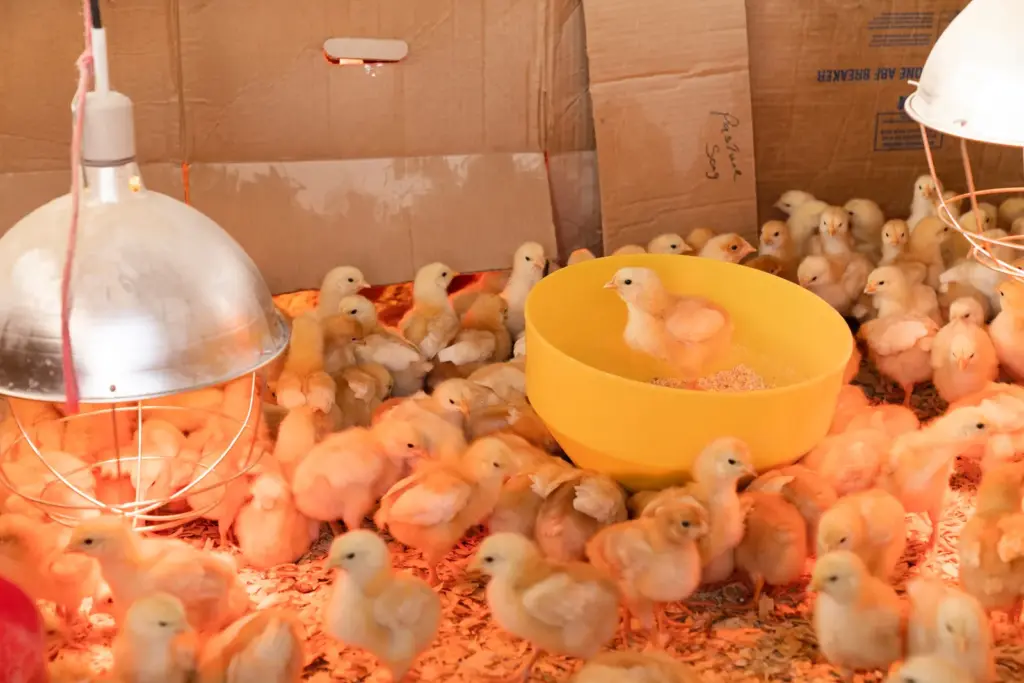
Caring for Chicks in a Pasture Setting
The initial weeks of a chick’s life are crucial. These little ones must be kept in a warm, secure brooder with controlled temperatures, typically around 95 degrees Fahrenheit and gradually reducing by about 5 degrees weekly. They require a protein-rich starter feed and fresh water. Given that these chicks will eventually transition to the pasture, even at this early stage, it can be helpful to expose them to small amounts of grass and soil to start building their immune system and natural foraging instincts.
Care Needed During the Pullet Stage on Pasture
As chicks mature into pullets, around 6 weeks of age, they begin to show readiness to explore outside their brooder. For pastured chickens, this is when gradual outdoor exposure can occur. Providing a secure, predator-proof space for exploration is crucial. Grower feed should replace the starter feed to support their rapid development, but they can also start complementing their diet with natural foraging.
Transition to the Laying Stage on Pasture
Upon reaching the laying stage, usually around 5-7 months, the hens’ diet should be shifted to a feed high in calcium to ensure robust eggshell formation. Though they will supplement their diet with foraged food, providing sufficient nutrition is essential. For pasture-raised hens, outdoor nesting boxes with soft bedding will encourage them to lay eggs in a safe, designated area. Frequent egg collection maintains cleanliness and prevents egg-eating habits.
Special Needs of Older Pasture-Raised Chickens
As pasture-raised chickens age, their egg production reduces and eventually ceases. Their diet may need adjustments – typically lower in protein and calcium but higher in energy – and they should always be free to forage. Older chickens may need easier access to comfortable roosting spots due to potential age-related conditions like arthritis. Regular health checks remain vital to detect signs of illness early.
Space Needed for Pasture-Raised Chickens
The space requirement ensures the chickens’ health and welfare and can impact the pasture’s longevity and productivity.
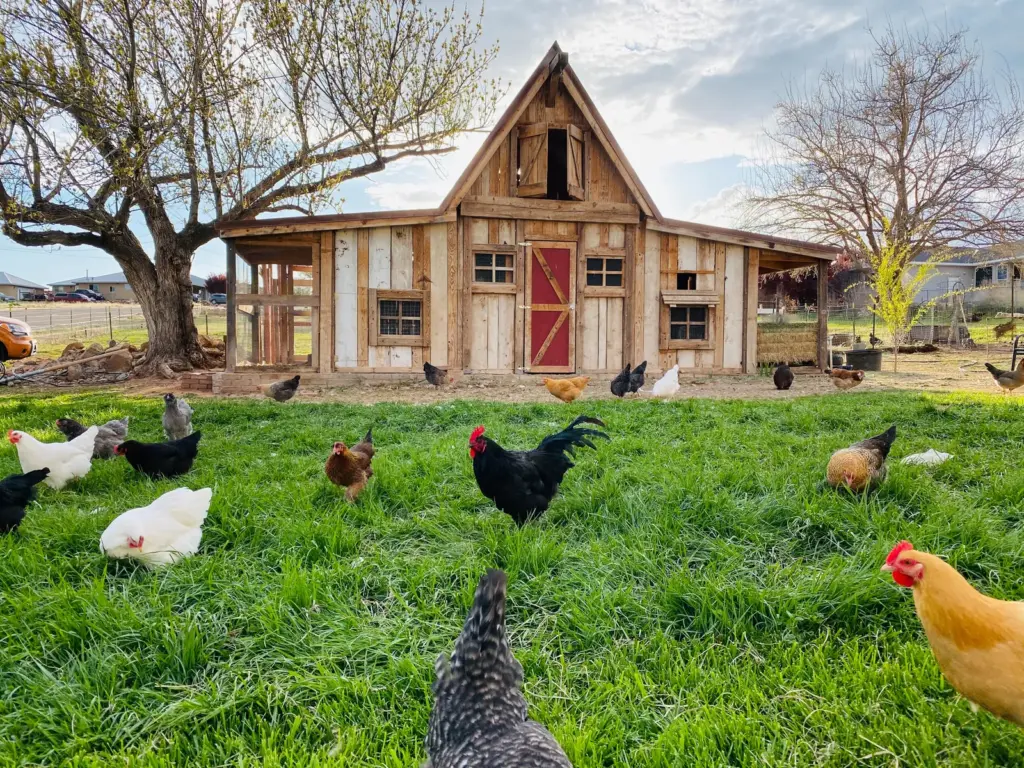
Minimum Space Requirements per Chicken
While space requirements can vary based on breed and the specific layout of your land, a commonly recommended minimum is 250 square feet per bird. This allows the chickens to forage extensively, exercise, and express natural behaviors while also helping to prevent overgrazing of the pasture.
Additional Space Considerations for Different Breeds
Depending on their size, behavior, and foraging habits, different breeds of chickens may require more or less space. For example, smaller bantam breeds may require less space, while larger or more active breeds may need more. Researching your chosen breed’s needs ensures you provide enough room for your chickens to thrive.
Importance of Varied Landscapes within Pasture
A varied landscape within the pasture can provide numerous benefits for your chickens. Areas with different vegetation types, varying elevations, and access to sun and shade can help meet your chickens’ various needs. These include dust bathing spots, finding different forage types, and seeking shelter from the weather or predators.
Adjustments for the Size of the Flock
As your flock grows, it’s essential to reassess your space needs regularly. Overcrowding can lead to health problems, increased resource competition, and damage to the pasture. Expanding the grazing area or rotating the chickens through different parts of the field can help maintain the health of your chickens and the land.
Choosing the Breed for Pasture-Raised Chickens
Generally, selecting the right breed of animals to raise on pasture is essential in setting up your flock or herd for success. For chickens, various factors must be considered when choosing the breed that best suits your particular situation and objectives.
Factors to Consider When Choosing the Breed
The climate of your region: Certain breeds thrive better in specific climates.
The purpose of your flock: Are you primarily interested in egg production, meat, or dual-purpose breeds that provide both?
The size of your land: Some chicken breeds are more active and will require more extensive pastures.
Profiles of Popular Breeds for Pasture Raising
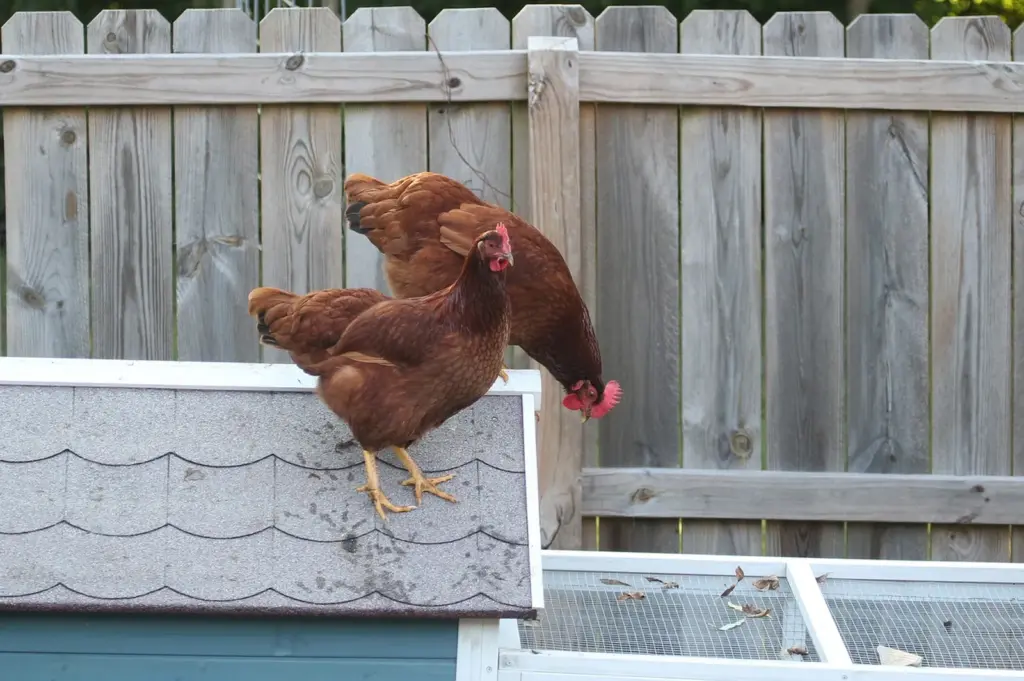
1. Rhode Island Reds: These birds are hardy, adaptable to various climates, and excellent layers of brown eggs. They’re known for their foraging skills, making them a good choice for pasture-raising.
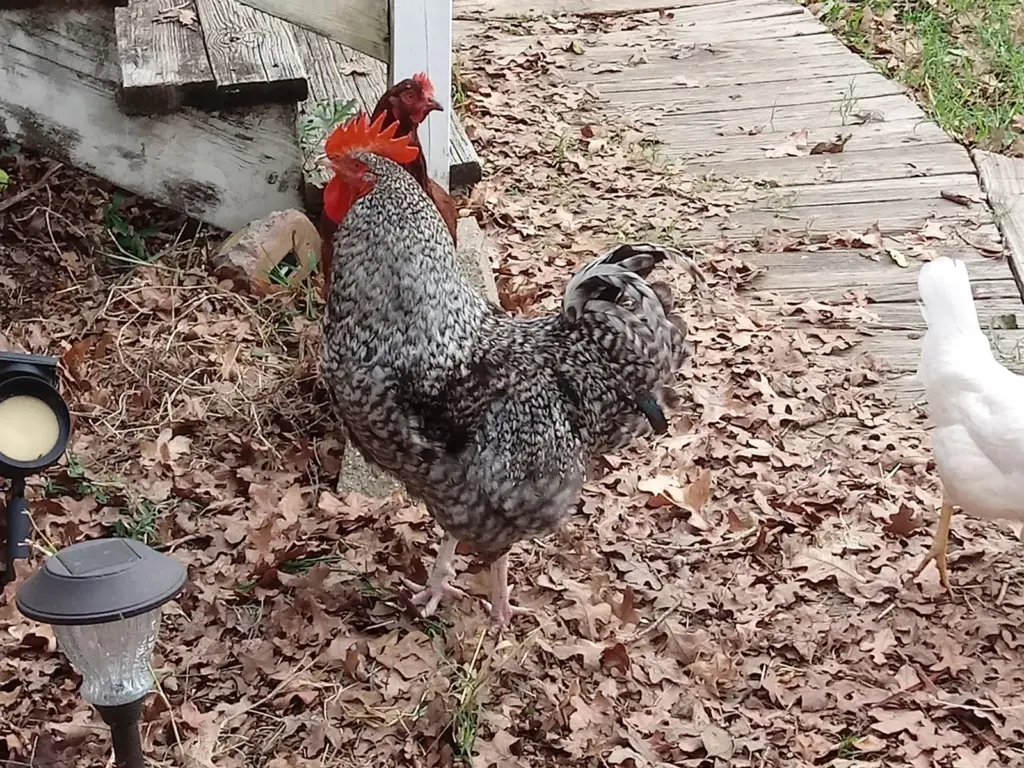
2. Plymouth Rocks (Barred Rocks): This breed is a good dual-purpose choice. They’re hardy birds that adapt well to different climates and are excellent foragers.
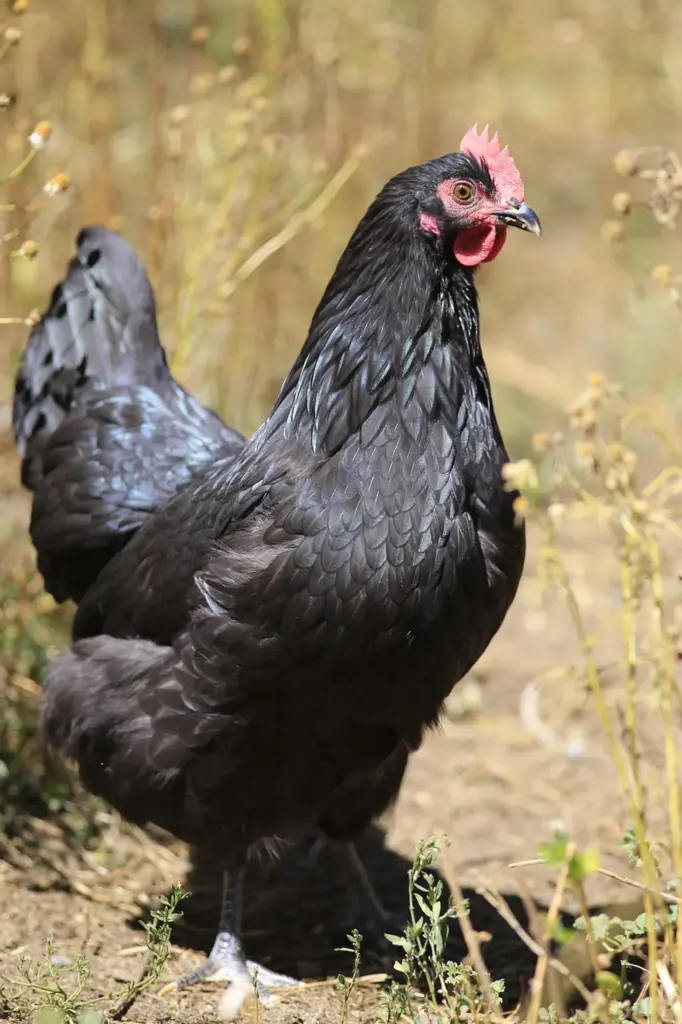
3. Australorps: Known for their impressive egg-laying abilities, Australorps are also excellent foragers. They’re calm, friendly birds that can adapt to various climates.
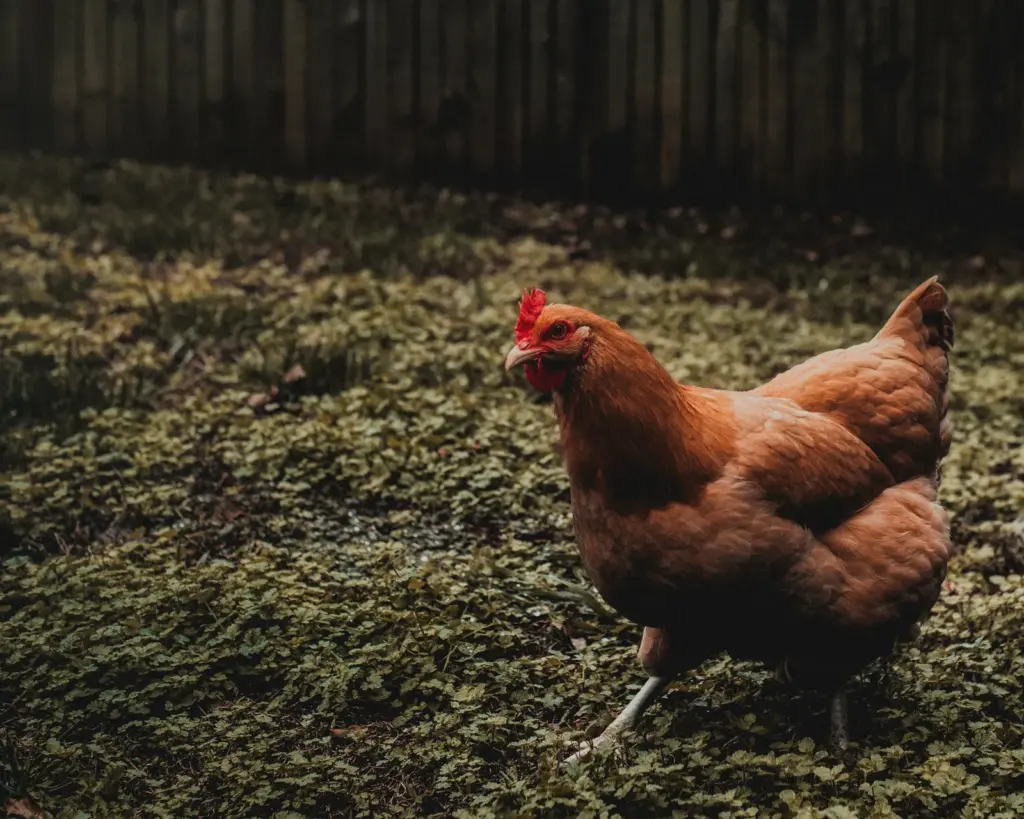
4. Red Ranger Broilers: Red Rangers are meat chickens known for their faster growth rates. They are an active breed that thrives in a pasture environment.
5. New Hampshire Reds: They are good layers of medium to large brown eggs and can also serve as a meat bird. New Hampshires are known for their early maturity and active foraging.
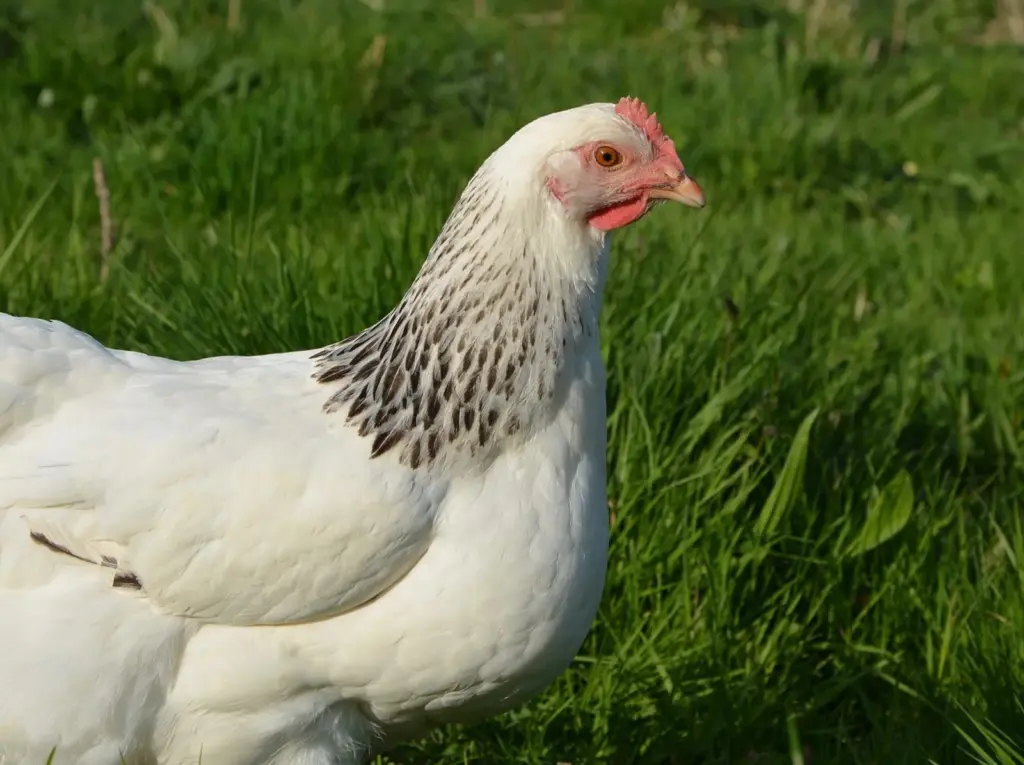
6. Sussex: Sussex chickens are another dual-purpose breed. They’re hardy birds that are excellent foragers and adapt well to various climates.
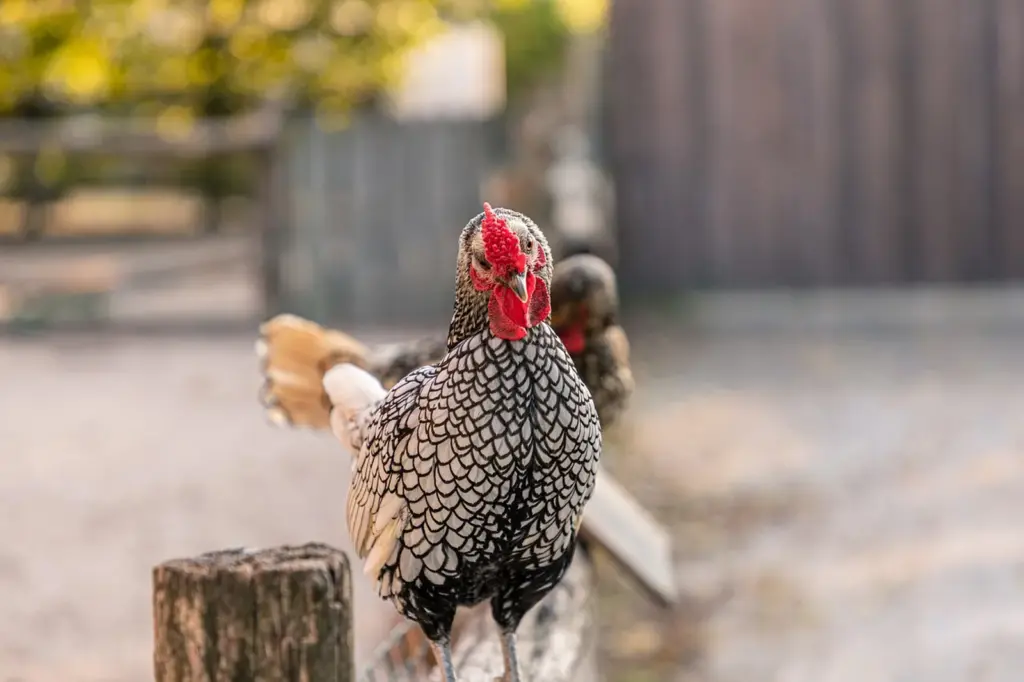
7. Wyandottes: These birds are excellent layers of brown eggs and can tolerate cold climates very well. Their calm temperament and good foraging ability make them suitable for pasture-raising.
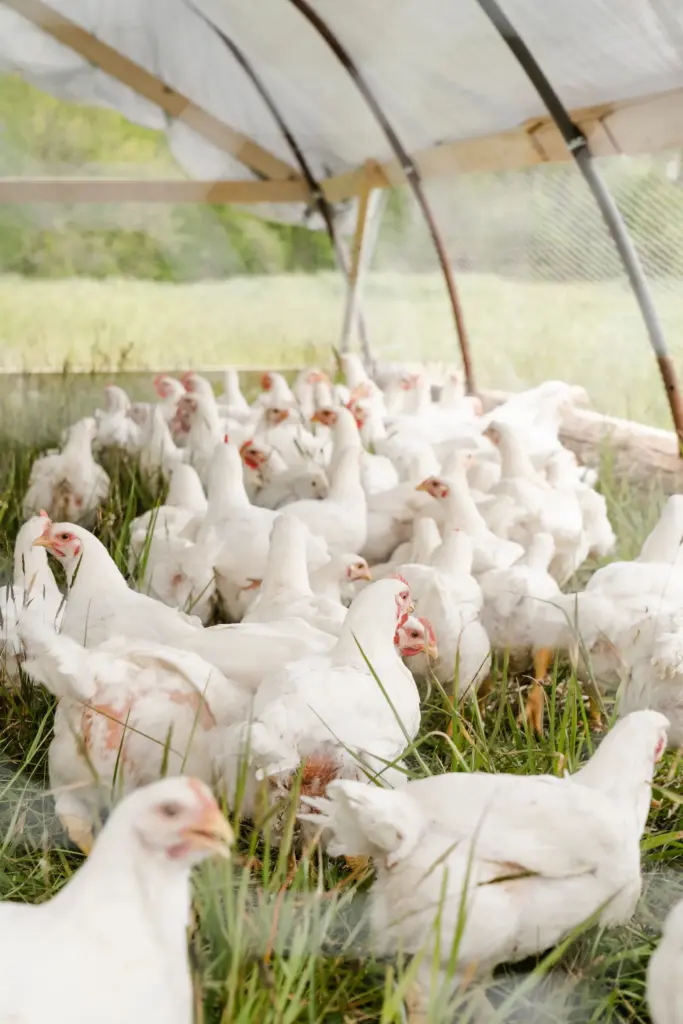
8. Jumbo Cornish X Rocks: These chickens are the industry standard for meat production, known for their rapid growth and substantial size. While less active or skilled in foraging than some of the other breeds, they can adapt to a pasture setting. Their feed intake will need to be carefully monitored, but they can benefit from the extra space and varied diet that a pasture environment provides.
Feeding Chickens on Pasture
While foraging will provide a substantial portion of their diet, supplementary feeding is crucial to ensure your chickens receive all necessary nutrients for optimal health and productivity.
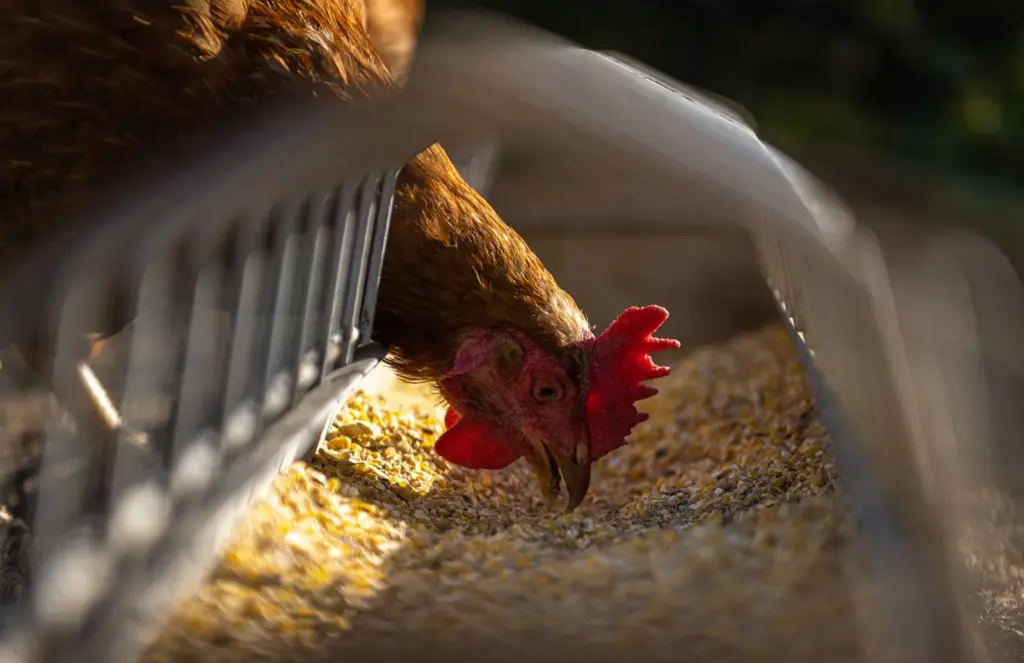
Balance of Foraged Food and Supplementary Feed
While chickens on pasture have access to various natural foods – insects, seeds, green plants, and even small rodents – these alone may not provide a complete and balanced diet. Hence, supplemental feed is necessary.
Types of Feed Available
Starter feeds are designed for young chicks, grower feeds for pullets, and layer feeds for hens that are laying eggs. These feeds come in different forms, including mash, crumble, and pellet, and can be chosen based on your chickens’ preferences and what’s most appropriate for their age and development.
Transitioning Chickens to Foraging
When transitioning chickens to forage, it’s important to do so gradually. Young chicks can be introduced to small amounts of grass and soil under supervision. As they grow and become accustomed to foraging, the amount of natural forage in their diet can be increased. Remember that foraging is a learned behavior, so older, experienced chickens can help teach younger ones.
Importance of Clean Water Supply
Water containers should be refilled daily and kept where they cannot be contaminated by dirt or droppings. Ensuring that water sources remain clean in a pasture setting can be challenging, so regular checks are crucial. In hot weather, chickens will drink more, so checking water supplies is especially important.
Providing Shelter for Pasture-Raised Chickens
Ensuring your pasture-raised chickens have adequate shelter is essential for their protection, comfort, and overall well-being. Shelters offer a safe place to roost, lay eggs, and hide from predators or harsh weather conditions.
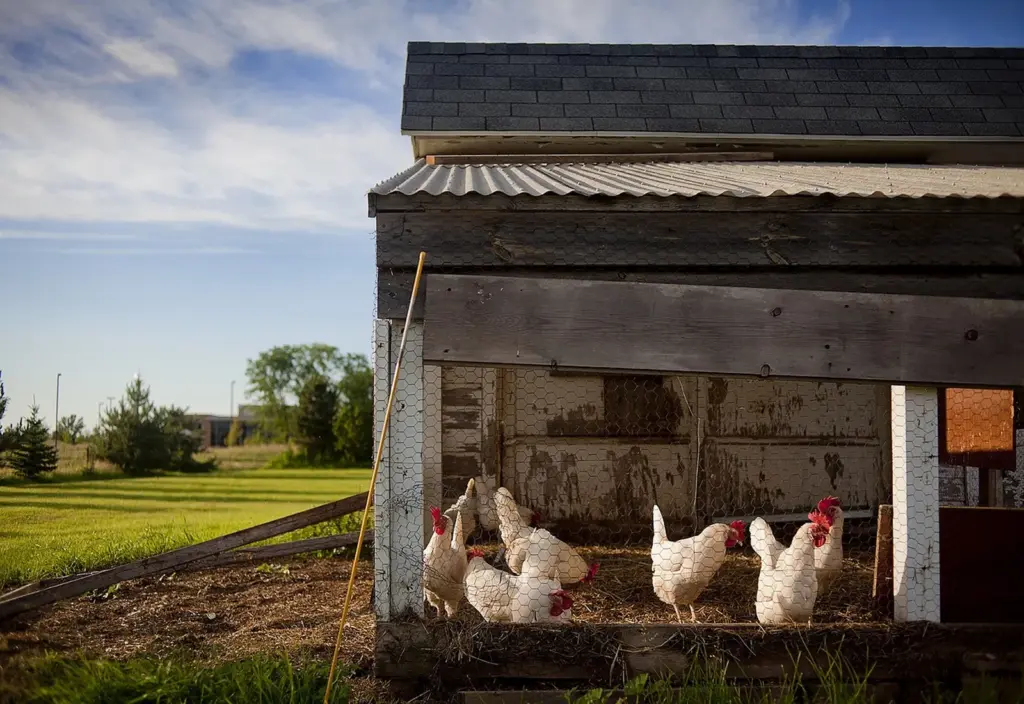
Types of Shelters
Traditional chicken coops can be modified to be mobile, allowing you to move them around the pasture periodically. These coops help distribute manure evenly across the field and regularly give chickens access to fresh ground.
Another option is a stationary coop with a large, enclosed run that chickens can freely enter and exit. Portable fencing or electric poultry netting can also create temporary shelters or enclosures that can be moved around the pasture.
Location and Accessibility of Shelters
The location of your shelters should consider the accessibility for the chickens and for you for tasks like egg collection, feeding, and cleaning. Ideally, shelters should be placed on high, well-drained ground to prevent issues with dampness and flooding. They should be easily visible to enable quick checks on the flock and be positioned to take advantage of natural shade during the hot summer months.
Protection from Predators
In a pasture environment, chickens can be vulnerable to different predators. As such, the shelters should be secure, with sturdy walls and a wire mesh floor or skirt to prevent predators from digging underneath. At night, chickens should be enclosed in a predator-proof coop, and any openings should be covered with a wire mesh to prevent entry by predators.
Weather Considerations
The local climate and weather patterns should also be a consideration when designing and placing shelters. In areas with hot summers, shelters should provide plenty of ventilation and shade. In colder climates, they should offer protection from wind and snow. Roosts should be designed to allow chickens to huddle together for warmth in cold weather, and nesting boxes should be sheltered from wind and rain.
Pasture Management for Raising Chickens
A well-managed pasture can provide an excellent forage source for chickens and benefit the land’s health in numerous ways.
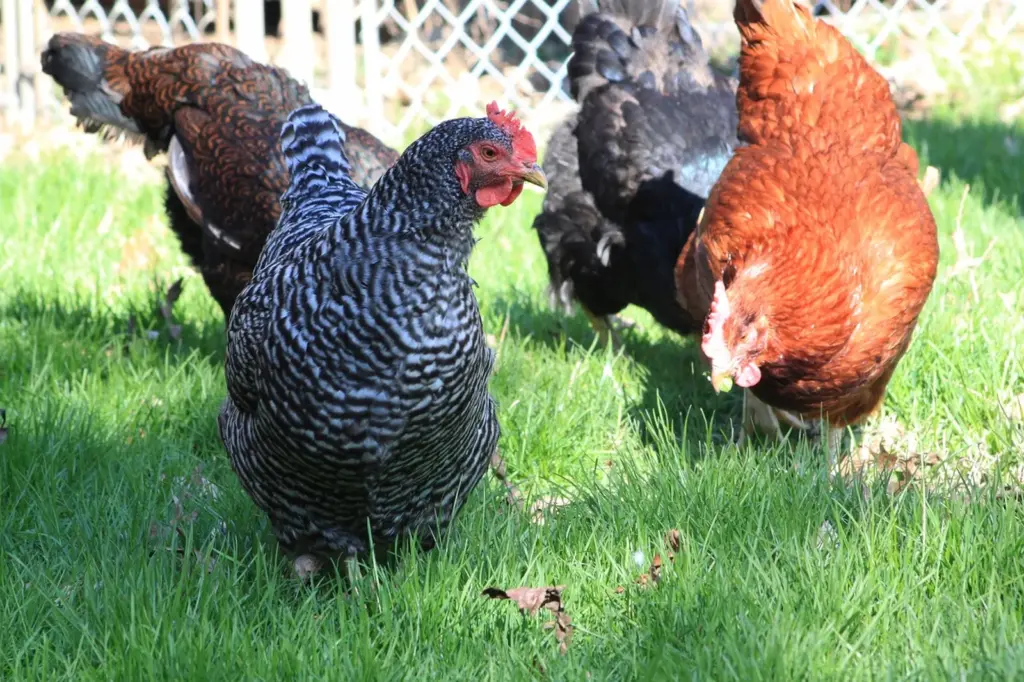
Importance of Rotation in Pasture Management
Rotation is a crucial aspect of pasture management. Moving your chickens around different pasture areas ensures the land is well-grazed and manure is distributed more evenly, enhancing soil fertility. Rotation also disrupts parasite cycles, reducing the likelihood of infestations. Chicken tractors or portable fencing can be helpful tools to facilitate this rotation.
Assessing Pasture Health
Look for signs of overgrazing, such as sparse vegetation or erosion, and monitor the diversity and abundance of plant species. Also, observe your chickens’ behavior – if they’re foraging less, it might indicate that the pasture’s quality has declined.
Strategies to Rejuvenate Overused Pasture
If a section of pasture has been overused, it may need rest to recover. Seeding it with a mix of grasses and legumes can help speed up this recovery process. Alternatively, consider using cover crops to improve soil fertility and structure. These can be grazed off by chickens when they’re mature, adding variety to their diet and helping to reestablish good soil health.
Considerations for Seasonal Changes
When plant growth slows in colder months, you may need to reduce the flock size or supplement their diet more heavily. Conversely, when forage is abundant in warmer months, you can increase your flock size or rely more heavily on the pasture for their diet.
Conclusion
Raising chickens on pasture provides numerous benefits. From improved chicken health and higher quality eggs and meat to enhanced soil health and sustainability, it’s a rewarding endeavor contributing to a more sustainable and humane farming system.
With careful planning and management – from choosing the right breed, providing balanced nutrition and shelter to maintaining the health of your pasture – you can successfully raise a thriving flock on pasture. Remember, every farm and every flock is unique. It’s essential to closely monitor your chickens and land and be prepared to adapt and respond to their needs.
We’d love to hear from you if you found this guide useful and are ready to start or enhance your journey in pasture-raising chickens. Share your experiences, thoughts, or questions in the comments section below. And if you know someone who might benefit from this information, feel free to share this post. Happy sustainable farming!

